Search engine optimization or SEO is the process of optimizing a website or content to help improve its online presence and rank higher on Google. It’s how eCommerce sites can drive organic traffic from search engines.
When you search for something on Google, it shows the search engine results pages (SERPs) with nine organic results in the first page. There may also be paid ads and Google Shopping results along with it as well.
In eCommerce, using SEO will help search engines understand what your store and products are about. This can result in your product pages appearing among those organic or unpaid results if search engines find your resources valuable enough.
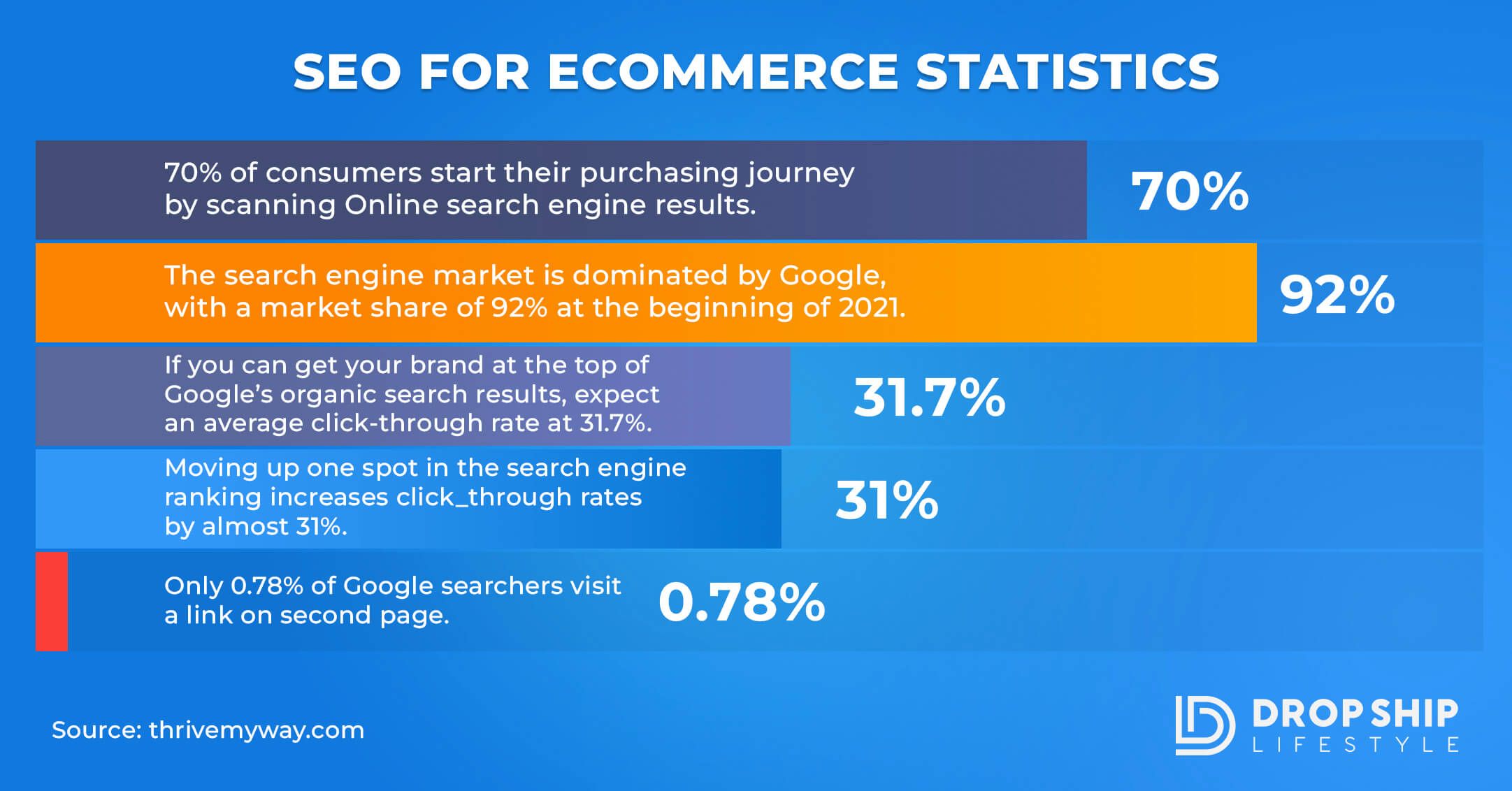
Among all strategies, what works best for this is by creating high-quality content and getting links from other sites. With these, you can increase your store's content relevance and link popularity so you’ll appear more on your target market results who are specifically looking for the products you’re selling.
To achieve this, it’s highly suggested to perform backlinking and use keywords on your product pages, especially in H tags and product titles.
Keywords are also called SEO keywords or keyphrase. These are search queries that users enter into search engines to look for information on a specific topic.
Backlinking, on the other hand, is the process of linking one website’s page to another. You earn a backlink from another website by letting them link to your site.
You can use both to successfully market your store online. This article is made to help you optimize keywords and backlinks. Learn more about how to perform eCommerce SEO with this guide.
Guide on How to Do SEO for eCommerce
Optimize Your Product Pages for Keywords
Keywords are important because they connect searchers, your website, and search engines. People enter words or phrases on search engines when looking for something. Search engines will then crawl various websites to look for these keywords. If keywords on your site match these words, your site will appear on the search results.
The goal is to rank on these pages so you can drive organic traffic to your site. This is why the keywords you choose to use and target will determine what and how much traffic you get.
Now, the big question is how you’ll use them to your advantage. The best way is to target the right keywords, especially long-tail keywords. There are two kinds of keywords - short and long. Short-tail keywords consist of only one or two words while long-tail ones have three or more words.
For example, “sneakers” is a short-tail keyword while “Adidas sneakers for women” is a long-tail keyword. Based on this example along, long-tail keywords are more specific queries than short-tails.
To find the right keywords to use, you need to gauge the keyword traffic and difficulty for your list of potential keywords. Keyword difficulty shows how difficult it is to rank on SERPs using a keyword while keyword traffic indicates how much traffic a keyword drives into websites.
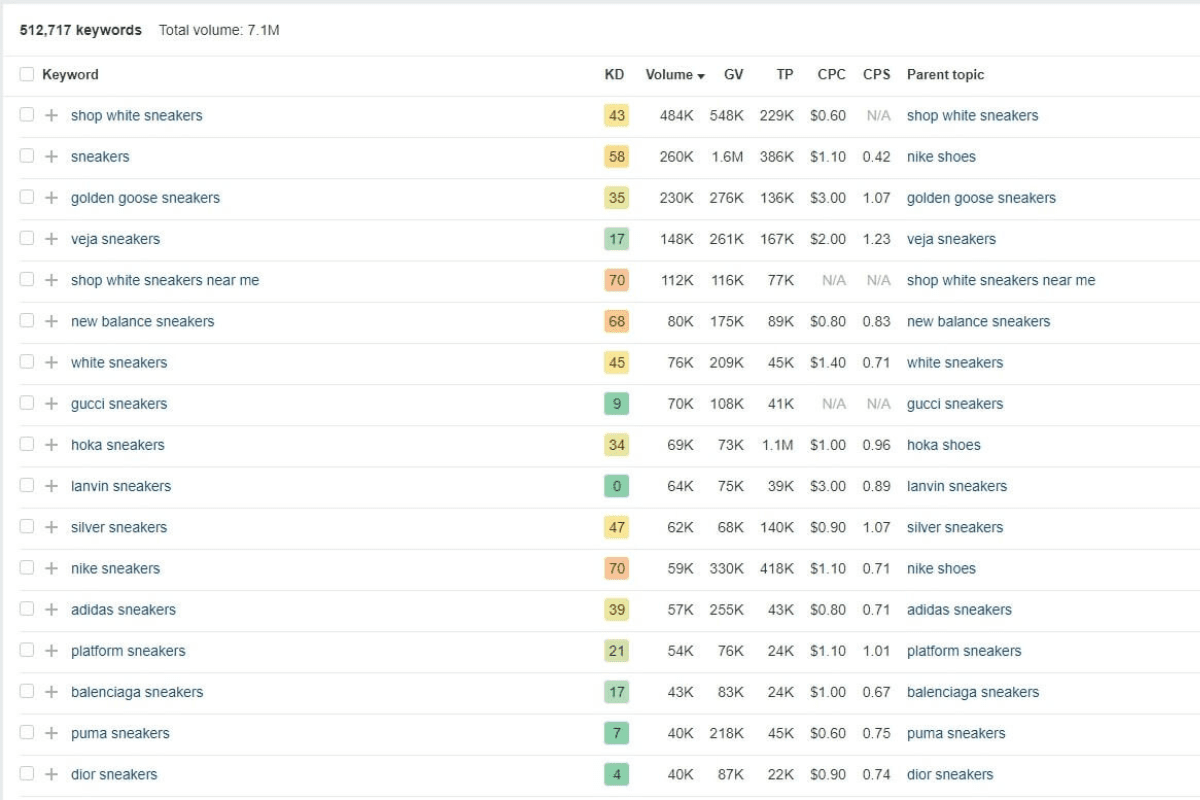
You can gauge these two through keyword research and by using keyword research tools. Here’s a simple explanation of how you can do it:

Moving forward, long-tail keywords are phrases that have clearer intent. Keyword intent shows the user’s purpose for the search.
For example, a search query with a commercial intent means that the user is most likely to purchase a product. These keywords usually include things like buy, deals, and more.
On the other hand, a search query with informational intent with words such as “how to,” “why,” “the best way to,” and more means that the user is finding out information about a concept or topic.
Instead of using singular keywords that have extremely tight competition and are vague, focus on long-tail keywords that have less competition. This will help you rank better in the SERPs.
Use keywords such as product brands, models, and SKUs.
For example, instead of using simply the general brand like “Adidas,” use “Adidas Pro Model SKU: 8814278.” The latter is a combination of the brand, model, and SKU. Additionally, you can add more keywords in this query, like “for women” or “for men” to be more specific.
These combined are perfect for eCommerce stores. Aside from vaguely using them on your pages, make sure you use them on the following:
Product Titles
The title is the identification of the product you’re selling. Google uses these titles in determining whether your product listing is relevant to a search query. That’s why using targeted keywords that will most likely match a customer’s search query will help your products appear in relevant searches.
Shopping algorithms have common points with SEO. Google values the title next after the images in listings. It’s also one of the attributes that shoppers see on Google’s results pages.
As dropshipping stores, one aspect you can take advantage of is the audience of your brand. If the brand of your products is well-known, add it to the title so the listing will show up when shoppers look for that brand.
Additionally, you can make it more specific by adding specific models and SKUs of the products. This is especially important if the models and their corresponding SKUs are popular as well.
Since there are instances that shoppers only know one out of these three, if you use all of them in your titles, your listing will have more visibility on search results. The clicks you’ll gain from this are extremely valuable.
Some product categories that use this strategy include shoes, electronics, and hardware.
Relevant H Tags
When building site pages for your store, HTML coding includes main headings and subheadings. These are H tags defined with H1 to H6 tags. The H1 tag is the most important heading while the H6 tag is the lowest. The H1 tag should always be the first heading on any webpage since it’s the main title of the page.
Search engines pay close attention to these headings since headings are expected to contain details about the page’s main topics. They outline what the page is about so proper distribution of your H tags is important.
This is why you should definitely place keywords in these tags. If search engine crawlers find relevant keywords in your tags that match the search queries of users, they’ll show the page with the H tags on search results.
If you’re making content, include the brand, model, and SKUs of the products you want to market in your H tags. This way, search engine bots can determine that your page has relevant information about a specific search query.
With this, you can rank your products through listing pages AND blog posts.
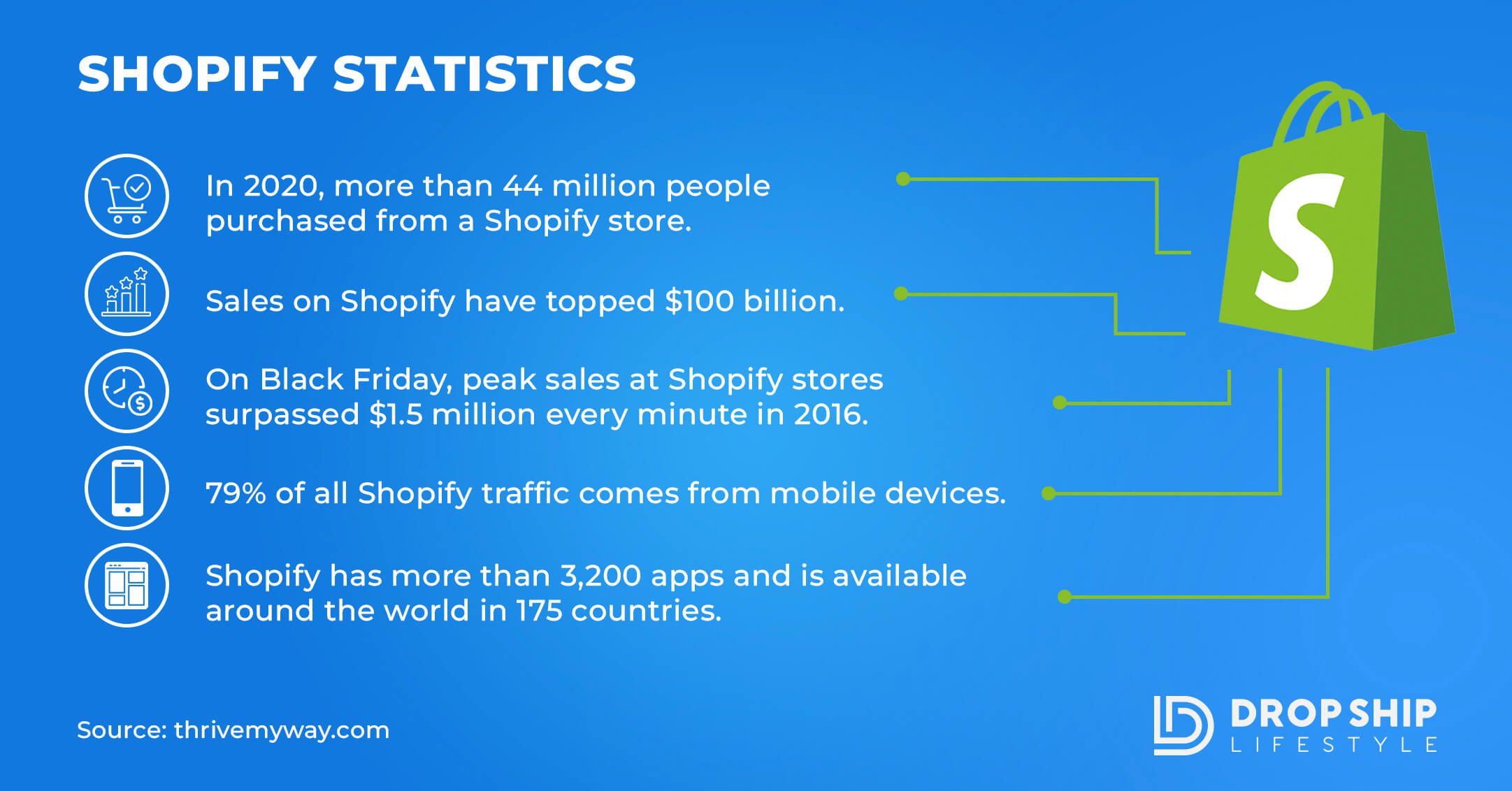
Build Backlinks
It’s not enough that you rely only on the keywords. Make sure you gain backlinks as well.
Backlinks are considered “votes of confidence” from one website to another. In a tight online competition, backlinks are valuable attributes for SEO. A backlink to your website is an indicator for search engines that other websites vouch for your content.
It means that your content is valuable enough to be used within another site’s content. More backlinks increase the reliability of your site allowing you to perform competitively compared to other sites in your niche. What search engines get from this is that your website has valuable content and resources that are worth ranking high on the SERPs.

When looking for sites to get backlinks, make sure to avoid these:
Getting Backlinks: Contact People
There are many ways you can get backlinks, which means there are different types of backlinks you can get. This includes naturally earned ones, manual links, and self-created links.
Both natural and self-created backlinks are challenging to get. That’s why it’s best to focus on manual links. These are links acquired by contacting people.
However, some backlinks are more valuable than others. That’s why you need to focus on the quality ones.
Quality links are dofollow links that come from trustworthy, high-authority, and popular websites. These quality links are important because they can help you build trust and authorization for many search engines. When other websites mark your backlink as dofollow, they pass on authority to your site.
Quality links can get you new leads, customers, and even readers since search engines know that your site is reliable or has authority.
By manually reaching out to people, you have a higher chance of getting quality backlinks. Reach out and get links from these people:
Your Suppliers
Make a list of your suppliers with their contact details and website URLs. Check their websites and look for opportunities of getting a backlink. You can look through their helpful resource pages in the menu. You can check the blogs too. Look for content where you think your store or content can be mentioned.
Narrow down your list with those who have the most potential with. Send them emails or call them to discuss having your link added to their websites.
Hobby Groups
If you sell products related to hobbies like surfing, reading, cooking, arts, and others, look for groups or people with these hobbies that might be interested in your products. Contact them, especially those that run their own sites or blogs about their hobbies or related products, and ask if you can get a link from them. This is also a great opportunity to make connections for other potential partnerships.
Companies that Use Your Products
If you sell products that are used by whole companies, like printers and other electronic products, you can also reach out to them. It’s a good idea to constantly nurture these types of relationships. Don’t be afraid to ask for backlinks, additional sales, or additional leads.
Create a Silo
Another way to get links is by creating a silo. An SEO silo is a website structure where you group, isolate and interlink your pages and content about a certain topic with one another. This helps you build sections of related pages and content on your site.
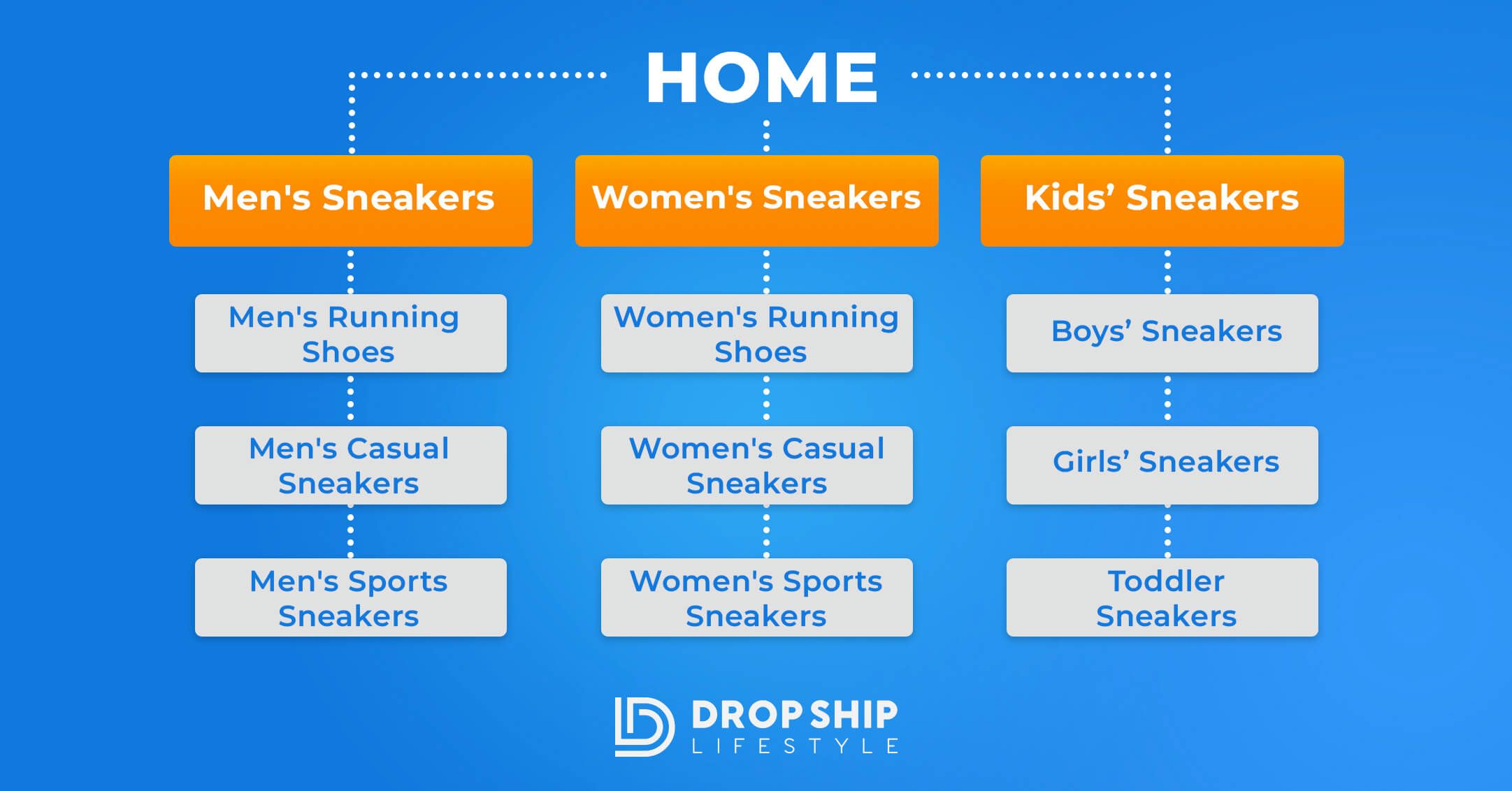
Silo structure example
Here are four steps on how to do so:
Determine the Core Topics of Your Site
If you offer distinct products, you can start there. If you offer different product pages, group those with a common theme together, like based on product categories. The same goes if you have pages mainly for content, like blog posts.
In the end, you should have individual silos for each core topic you formed. It’s also likely that there’ll be some pages that don’t fit a silo, like the “About” and “Contact” pages, and that’s okay.
Organize Your Site Navigation to Reflect These Core Topics
Once you’ve determined the core topics for your site, create subfolders or subpages for each of them. After that, you can start placing the individual pages in the appropriate folders. Make sure to update your site’s navigation for the changes to reflect.
Develop Strong Internal Linking Strategies
Search engine crawlers also find internal links valuable since they can show them the connection between your pages. Add links between the pages of every subfolder wherever a link and the content would be relevant.
This will show search engines and your customers that these particular pages are related to one another and can offer them more resources about a topic or product.
Continue Adding Relevant Content
For a silo to be effective, you need to continue adding content, or products, that are relevant to the existing core focus but are not yet available on your site. This will show that you have authority over your chosen topics, products, or theme.
With these steps and strategies, you now know how to get started with your SEO journey. Remember that the goal is to increase your site’s rank in search engines!

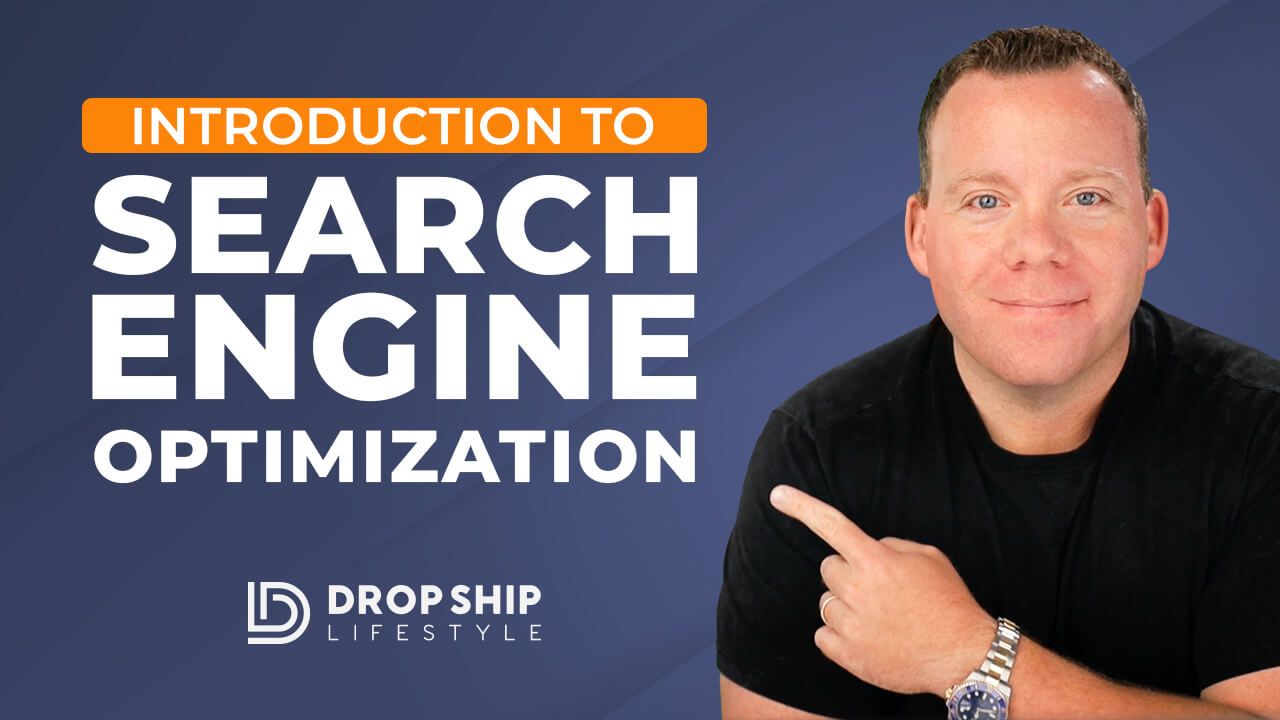

Hey Everyone,
As many of you already know I created Drop Ship Lifestyle after selling a network of eCommerce stores and then trying to find a community of other store owners to network with… What I found was a bunch of scammers who promised newbies they would get rich quick by following their push-button systems!
This led me to create a new community along with an online training program that shares how to build a REAL online business.
I’d love to hear what you think… it’s a 2.5-hour training designed to help you drop ship profitably… all for free.
Be sure to click here to check it out and send me your feedback!
If you go through the “How To Start & Grow A Hyper-Profitable Online Store” webinar and still have questions just contact me and I will help you out